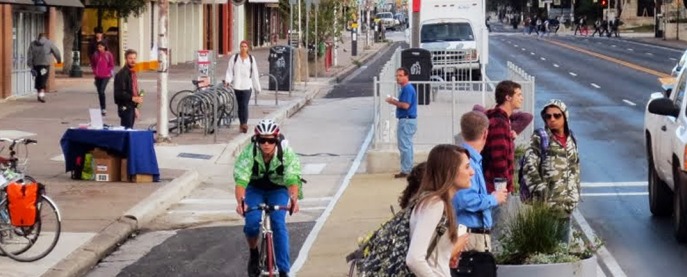
Share On Social!

The number of communities throughout the U.S. adopting Complete Streets policies continues to grow. According to Smart Growth America, in 2014 at least 70 jurisdictions adopted new policies such as resolutions and ordinances, aimed at making roads safer and more livable for all road users. Rather than designing roads that cater to automobiles, Complete Streets policies serve to ensure that communities design streets to be more equitable. By placing greater emphasis on the need for sidewalks, bike lanes, and aesthetics, Complete Streets policies enhance safety and also encourage active transportation.
Latino communities throughout the U.S. can greatly benefit from having Complete Streets.
In many low-income, minority communities, biking, public transportation and walking are primary forms of transportation. However, not having safe roads to accommodate the needs of these road users puts many of these individuals at great risk. Research shows that for Latino kids, not having safe streets also acts as a barrier to physical activity and contributes to the childhood obesity epidemic.
Each year Smart Growth America, a national organization that researches and advocates for Complete streets throughout the nation, publishes a report that highlights the top Complete Streets policies in the country.
This year 11 communities across the U.S. (including Austin, TX, & Los Angeles County, two heavily Latino cities) stood out for having Complete Streets policy statements that set the example for the rest of the nation. The top communities include:
- Ogdensburg, NY
- Troy, NY
- Lakemoor, IL
- Dawson County, MT
- Austin, TX
- Acton, MA
- Middleton, MA
- Reading, MA
- Salem, MA
- Los Angeles County Metropolitan Transportation Authority
- Stoughton, MA
Read more about this here.
Access Smart Growth America’s Best Complete Streets of 2014 report here.
To learn more about Latino kids and barriers to physical activity, see Salud America!‘s Active Spaces resources here.
By The Numbers
33
percent
of Latinos live within walking distance (<1 mile) of a park



